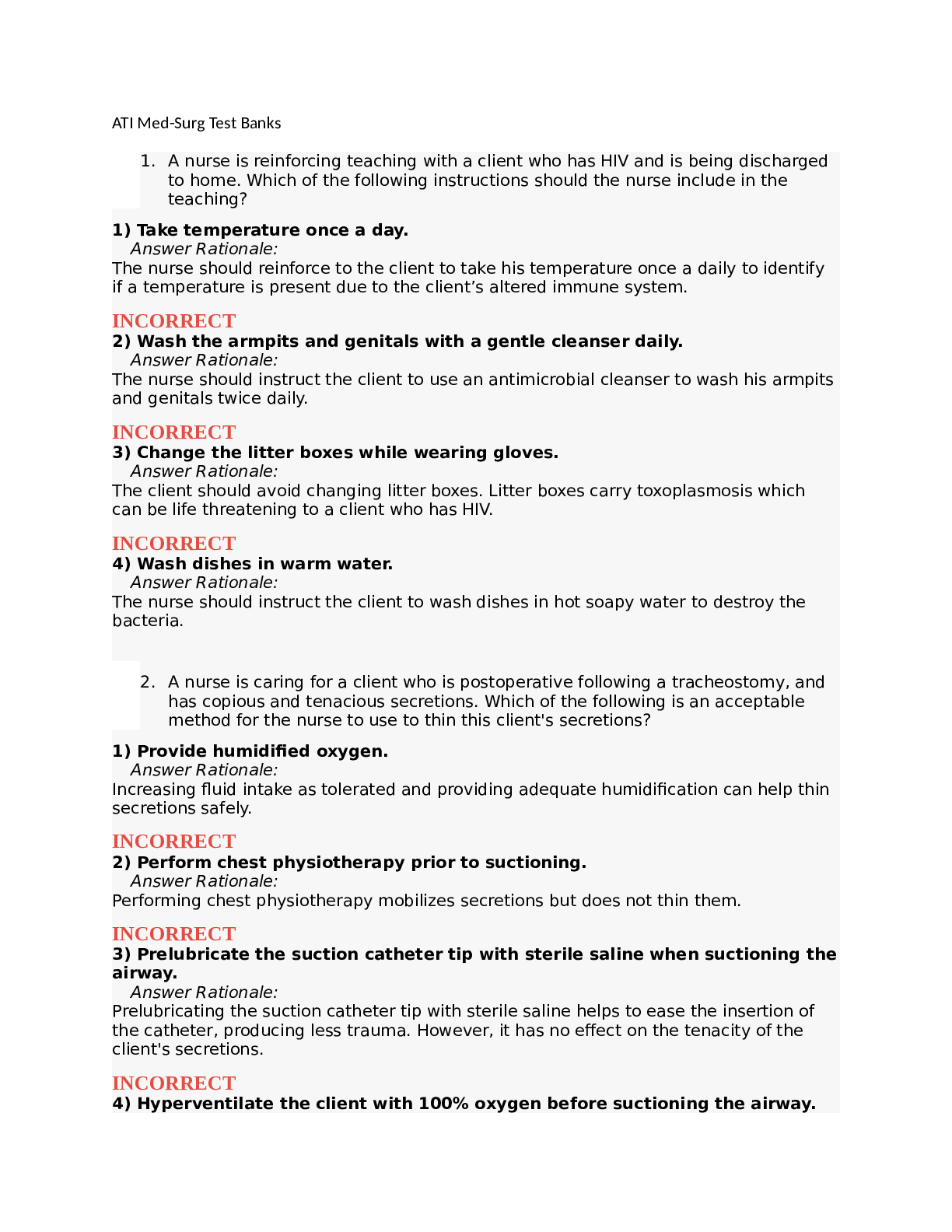*NURSING > ATI MEDICAL SURGICAL > ATI MEDSURG 2 NUR 265/ DETAILED ANSWER KEY NEURO- SHOCK & BURNS PRACTICE QUESTIONS & ANSWERS 2024 (All)
ATI MEDSURG 2 NUR 265/ DETAILED ANSWER KEY NEURO- SHOCK & BURNS PRACTICE QUESTIONS & ANSWERS 2024
Document Content and Description Below
ATI MEDSURG 2 NUR 265/ DETAILED ANSWER KEY NEURO- SHOCK & BURNS PRACTICE QUESTIONS & ANSWERS 2024 1. A nurse in the emergency department is implementing a plan of care for a conscious client who ... has a suspected cervical cord injury. Which of the following immediate interventions should the nurse implement? (Select all that apply.) A. Hypotension B. Polyuria C. Hyperthermia D. Absence of bowel sounds E. Weakened gag reflex Rationale: <b>Hypotension is correct.</b> Lack of sympathetic input can cause a decrease in blood pressure. The nurse should maintain the client's SBP at 90 mm Hg or above to adequately perfuse the spinal cord.</br></br><b>Polyuria is incorrect.</b> The nurse should check the client for bladder distention and inability to urinate due to ineffective function of the bladder muscles.</br></br><b>Hyperthermia is incorrect.</b> The nurse should monitor the client for hypothermia caused by a lack of lack of sympathetic input.</br></br><b>Absence of bowel sounds is correct.</b> Spinal shock leads to decreased peristalsis, which could cause the client to develop a paralytic ileus.</br></br><b>Weakened gag reflex is correct.</b> The nurse should monitor the client for difficulty swallowing, or coughing and drooling noted with oral intake. 2. A nurse is performing discharge teaching for a client who has seizures and a new prescription for phenytoin. Which of the following statements by the client indicates a need for further teaching? A. "I will notify my doctor before taking any other medications." Rationale: Many medication interactions can occur with phenytoin; therefore, the client's provider should be notified that the client is taking phenytoin. B. "I have made an appointment to see my dentist next week." Rationale: The client understands that phenytoin causes an overgrowth of the gums that makes dental monitoring important. C. "I know that I cannot switch brands of this medication." Rationale: The client understands that bioavailability varies with different brands, so no substitutions should be made. D. "I'll be glad when I can stop taking this medicine." Rationale: Phenytoin is an anticonvulsant used to treat various types of seizures. Clients on anticonvulsant medications commonly require them for lifetime administration, and phenytoin should not be stopped without the advice of the client's provider. 3. A nurse at an ophthalmology clinic is providing teaching to a client who has open angle glaucoma and a new prescription for timolol eye drops. Which of the following instructions should the nurse provide? A. The medication is to be applied when the client is experiencing eye pain. Rationale: The client needs to take the medications daily to reduce intraocular pressure and preserve remaining eyesight. B. The medication will be used until the client's intraocular pressure returns to normal. Rationale: Treatment for open-angle glaucoma is to continue for life. Abrupt discontinuation can worsen the client's condition. C. The medication should be applied on a regular schedule for the rest of the client's life. Rationale: Medications prescribed for open angle glaucoma are intended to enhance aqueous outflow, or decrease its production, or both. The client must continue the eye drops on an uninterrupted basis for life to maintain intraocular pressure at an acceptable level. D. The medication is to be used for approximately 10 days, followed by a gradual tapering off. Rationale: Treatment for open-angle glaucoma is to continue for life. 4. A nurse is in a client's room when the client begins having a tonic-clonic seizure. Which of the following actions should the nurse take first? A. Turn the client's head to the side. Rationale: The first action the nurse should take when using the airway, breathing, circulation approach to client care is to turn the client's head to the side. This action keeps the client's airway clear of secretion to prevent aspiration. B. Check the client's motor strength. Rationale: The nurse should check the client's motor strength as part of a neurovascular assessment following the seizure; however, there is another action the nurse should take first. C. Loosen the clothing around the client's waist. Rationale: The nurse should loosen the clothing around the client's waist to protect the client from injury; however, there is another action the nurse should take first. D. Document the time the seizure began. Rationale: The nurse should document the time the seizure began and ended to provide information to the provider about the severity of the seizure; however, there is another action the nurse should take first. 5. A nurse is caring for a client following cataract surgery. Which of the following comments from the client should the nurse report to the client's provider? A. "My eye really itches, but I'm trying not to rub it." Rationale: Itching is common after cataract surgery. The nurse should remind the client not to rub or place pressure on the eyes. B. "I need something for the pain in my eye. I can't stand it." Rationale: Following cataract surgery, the client should expect only mild pain and should immediately report any pain, decrease in vision, or increase in discharge from the eye. Severe eye pain after surgery might indicate increased intraocular pressure or hemorrhage. C. "It's hard to see with a patch on one eye. I'm afraid of falling." Rationale: Clients who wear an eye patch lose their depth perception and part of their peripheral vision, temporarily decreasing visual acuity. D. "The bright light in this room is really bothering me." Rationale: The client may find that exposure to bright light is uncomfortable after cataract surgery. Wearing sunglasses can prevent most of the client's discomfort. 6. A nurse is caring for a client who is 1 day postoperative following a transsphenoidal hypophysectomy. While assessing the client, the nurse notes a large area of clear drainage seeping from the nasal packing. Which of the following should be the nurse’s initial action? A. Document the amount of drainage. Rationale: The nurse should document the amount of drainage along with the clarity to determine the extent of the cerebral spinal fluid (CSF) leakage and the presence of blood or pus; however there is another action that is priority. B. Obtain a culture of the drainage. Rationale: Although infection is a potential complication of the procedure, there is another action that is priority. C. Check the drainage for glucose. Rationale: A potential complication of hypophysectomy is cerebral spinal fluid (CSF) leakage. Fluid leakage from the nose is a sign that this complication has occurred. The first action the nurse should take using the nursing process is to assess the drainage for the presence of glucose, which would indicate that the drainage is CSF. D. Notify the client's provider. Rationale: Although the provider should be notified of the findings, there is another action that is priority. 7. A nurse is caring for a client who has expressive aphasia following a cerebrovascular accident (CVA). Which of the following parameters should the nurse use first in order to assess the client's pain level? A. pulse and blood pressure findings Rationale: The nurse should assess the client's pain level routinely along with vital signs. A pain assessment should also be completed if the client has a change in condition, such as a new [Show More]
Last updated: 2 months ago
Preview 1 out of 52 pages
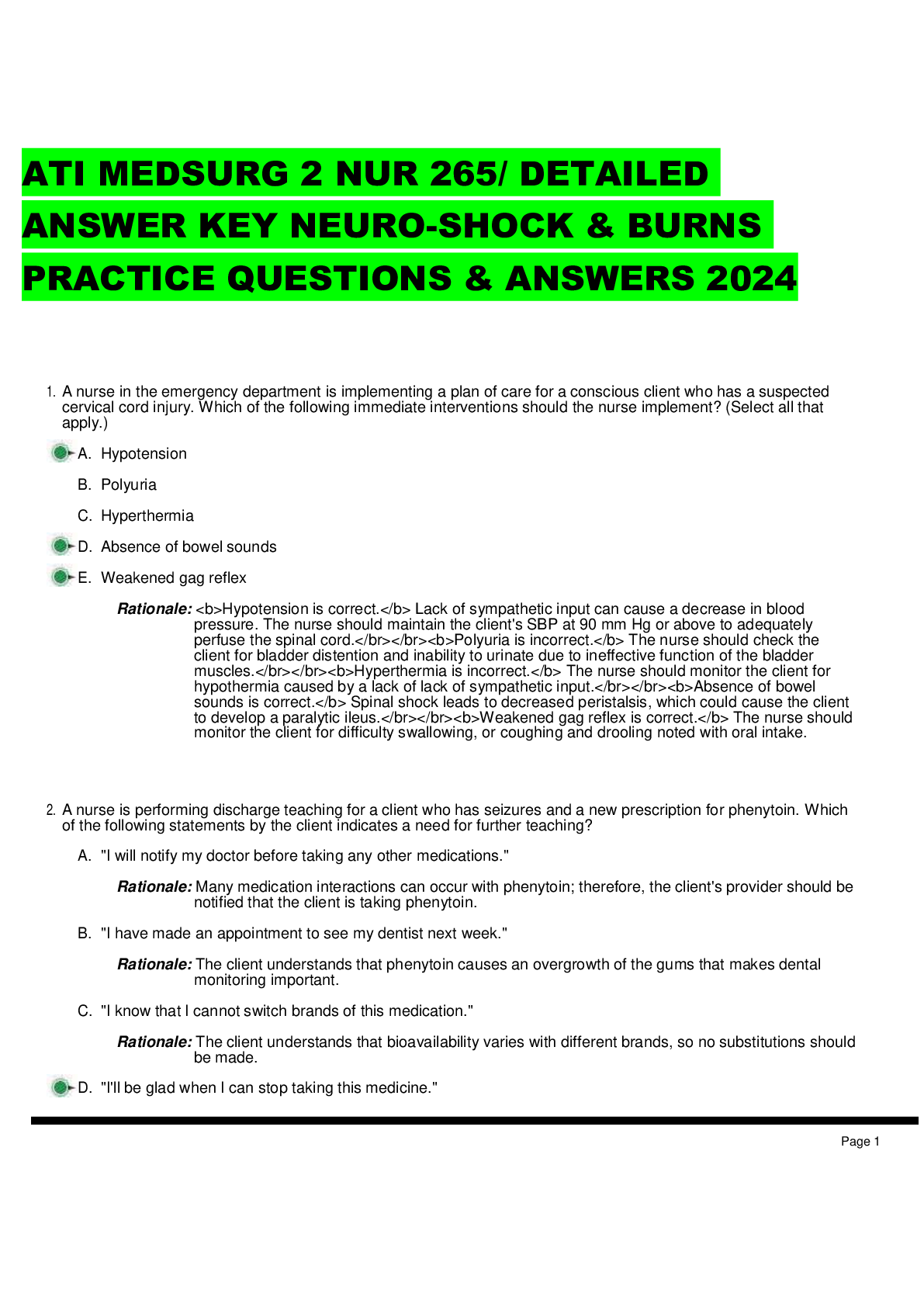
Reviews( 0 )
Document information
Connected school, study & course
About the document
Uploaded On
Feb 17, 2024
Number of pages
52
Written in
Additional information
This document has been written for:
Uploaded
Feb 17, 2024
Downloads
0
Views
15



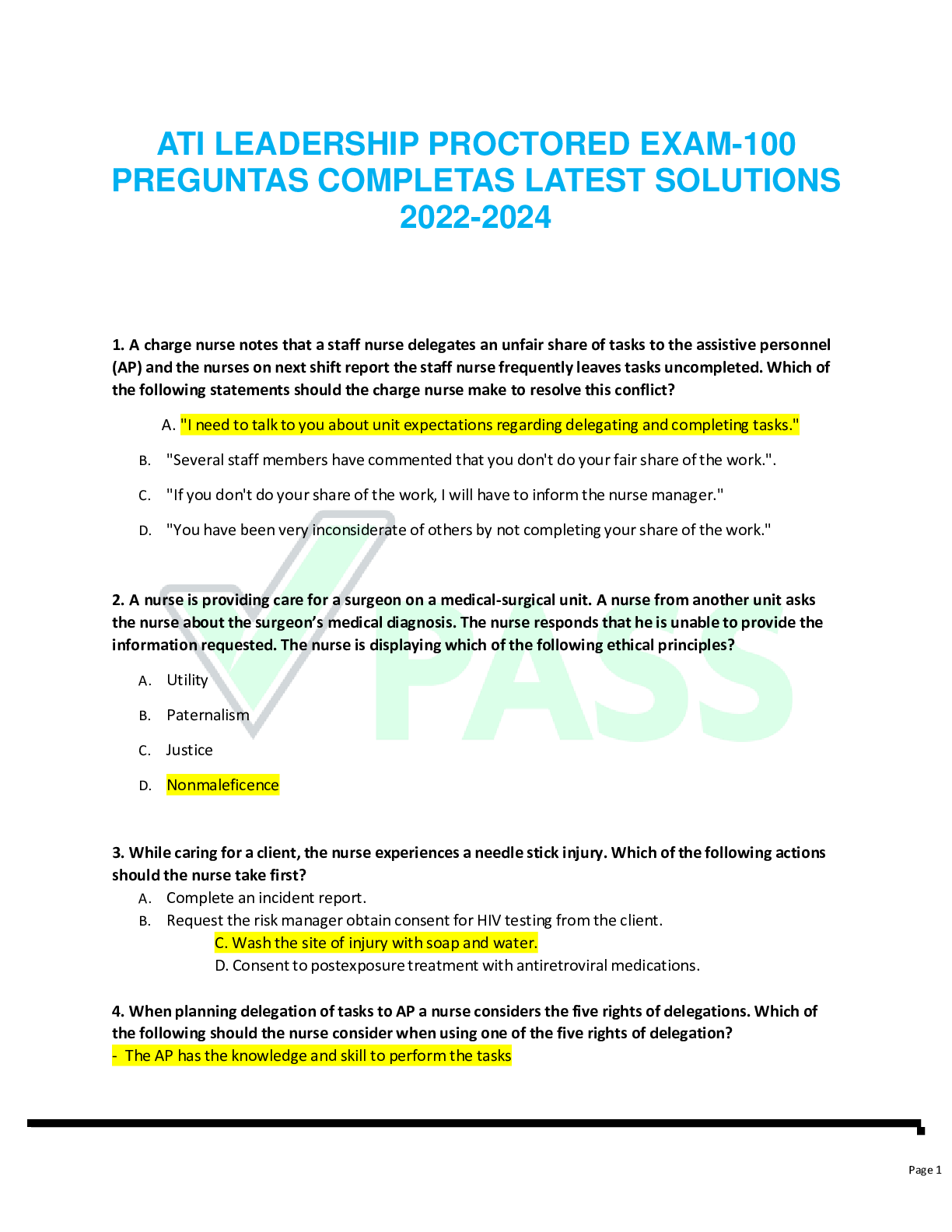
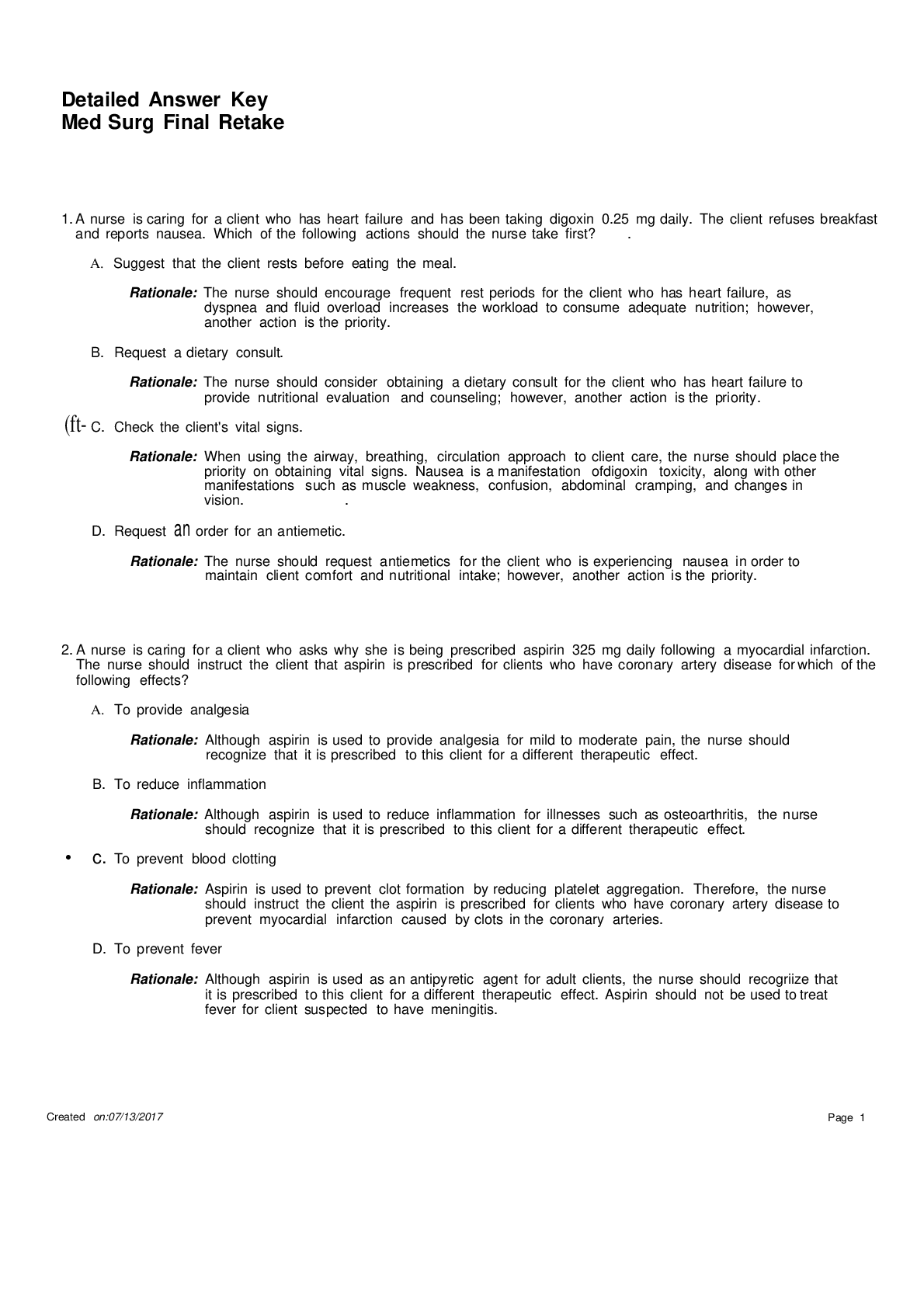
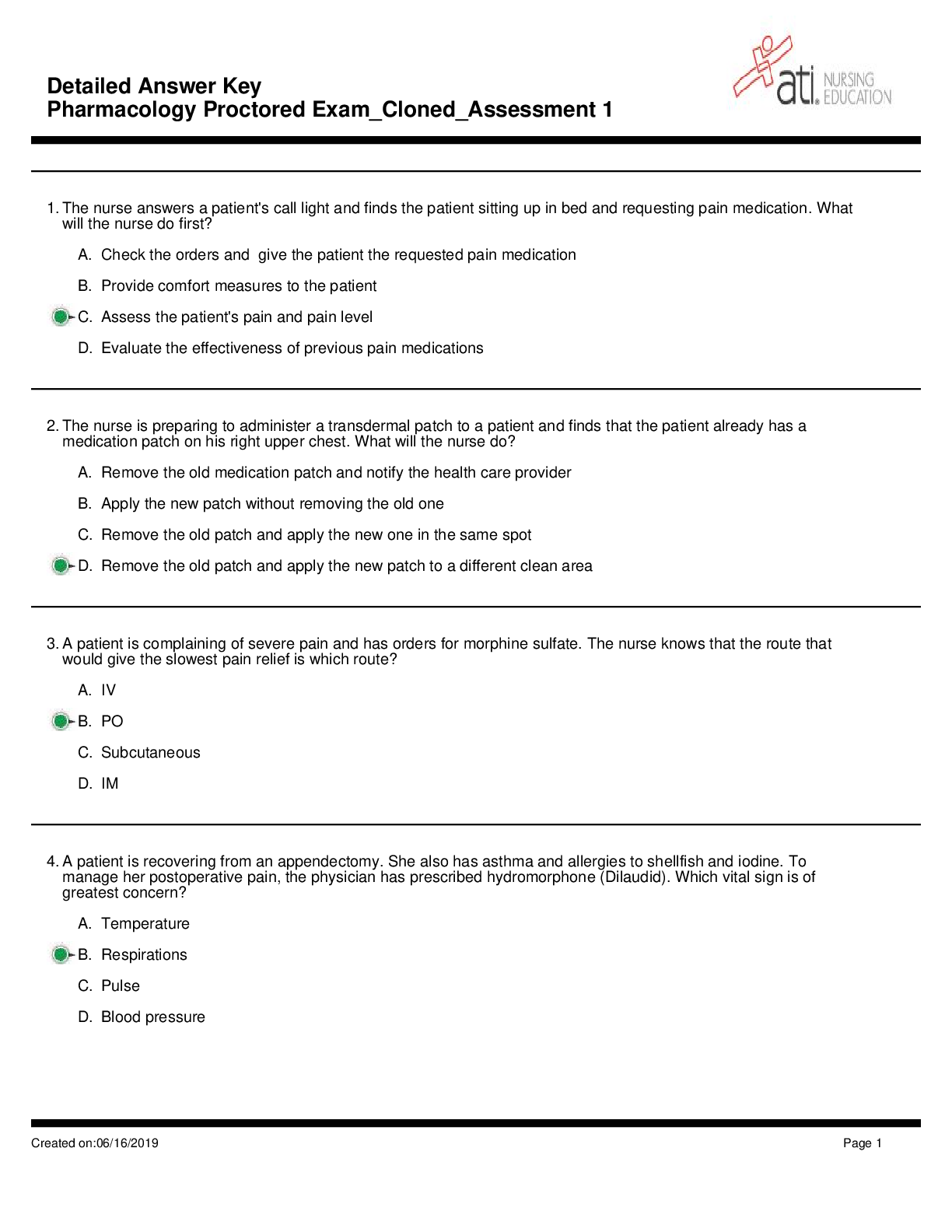
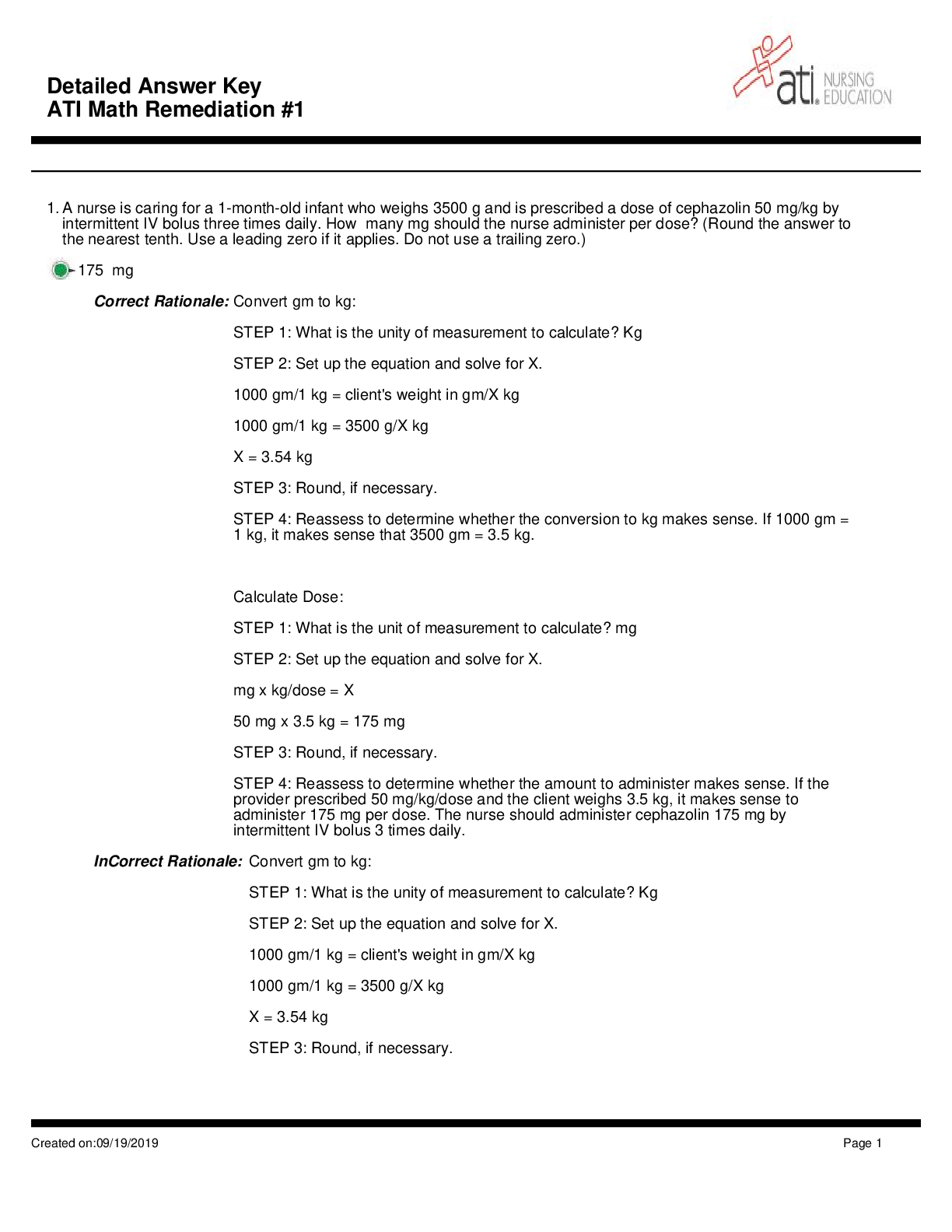
.png)
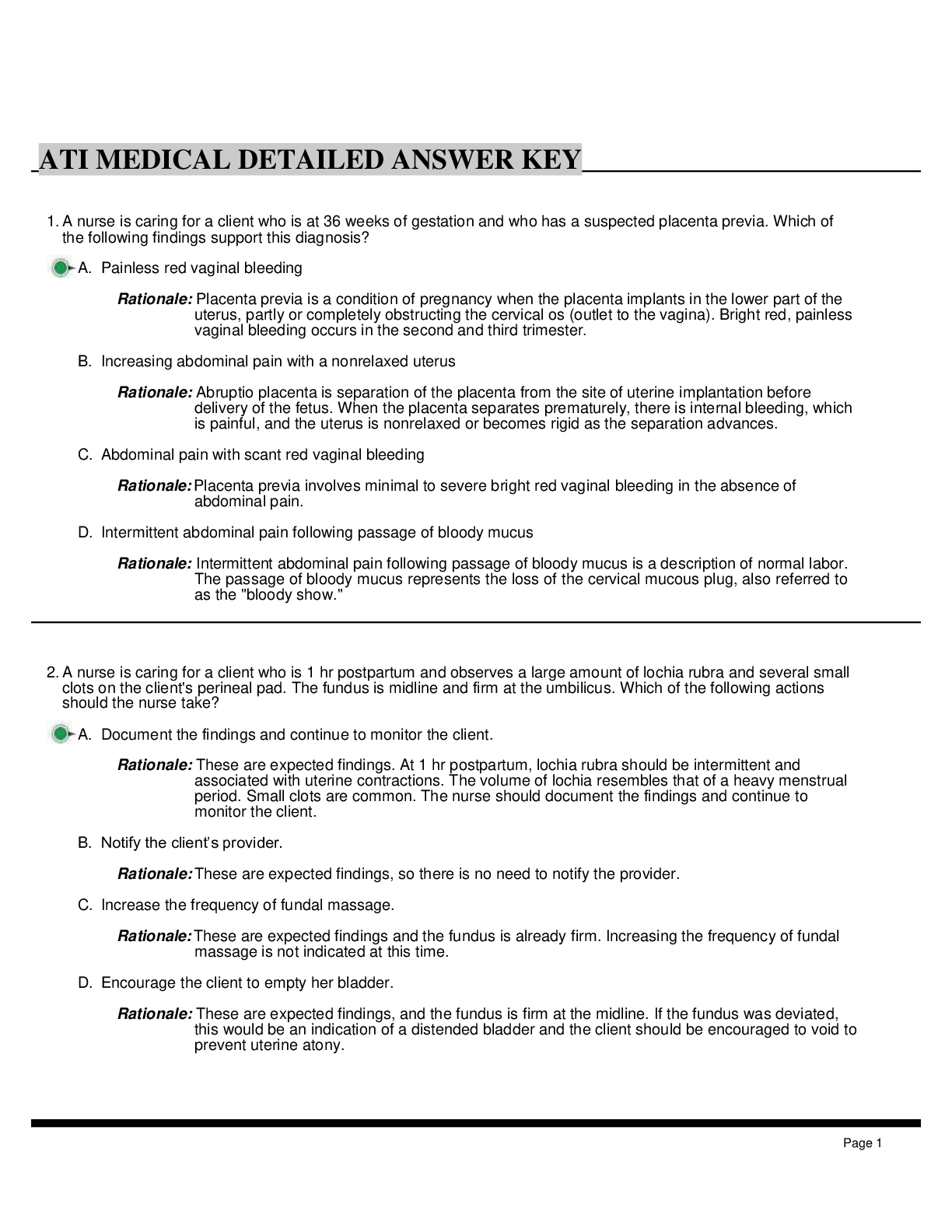
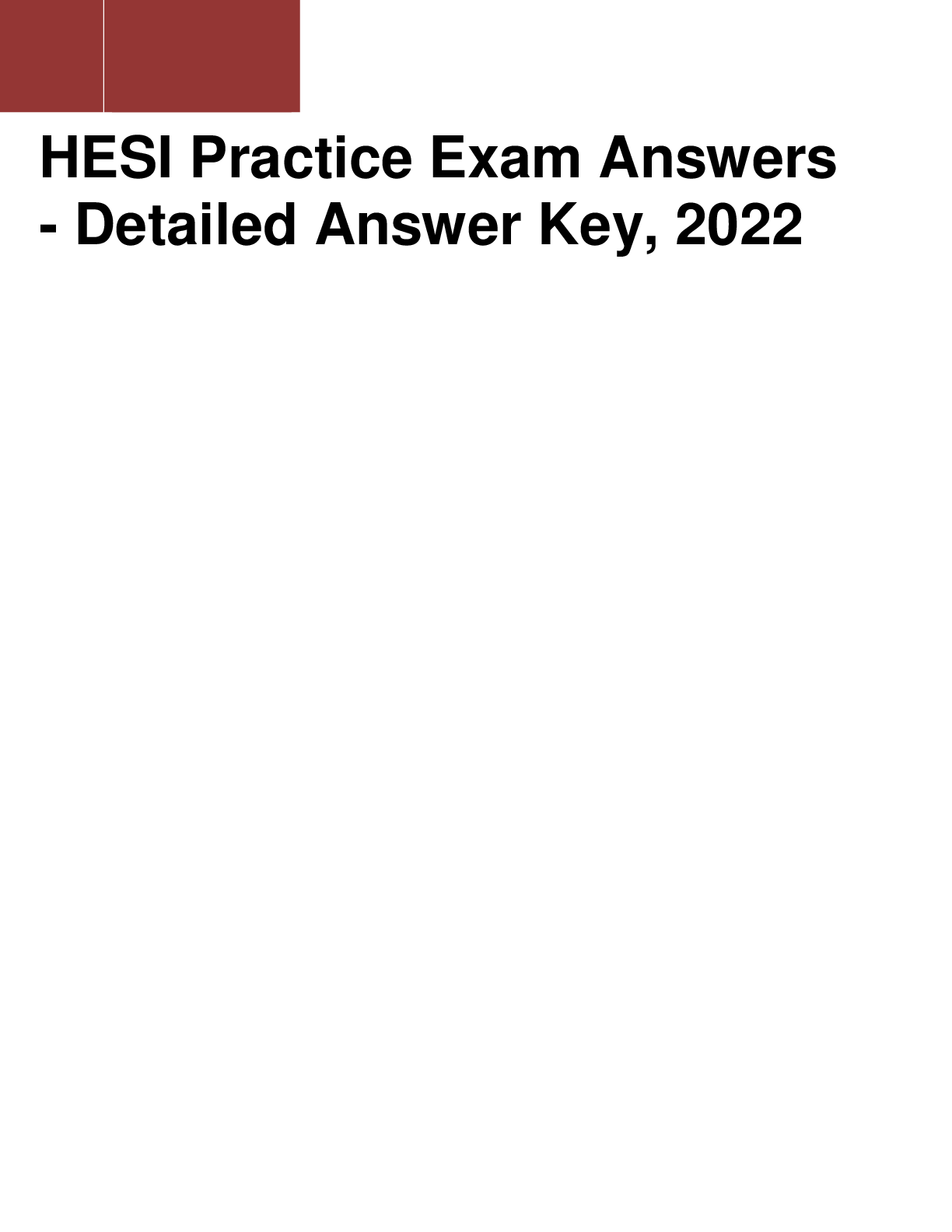
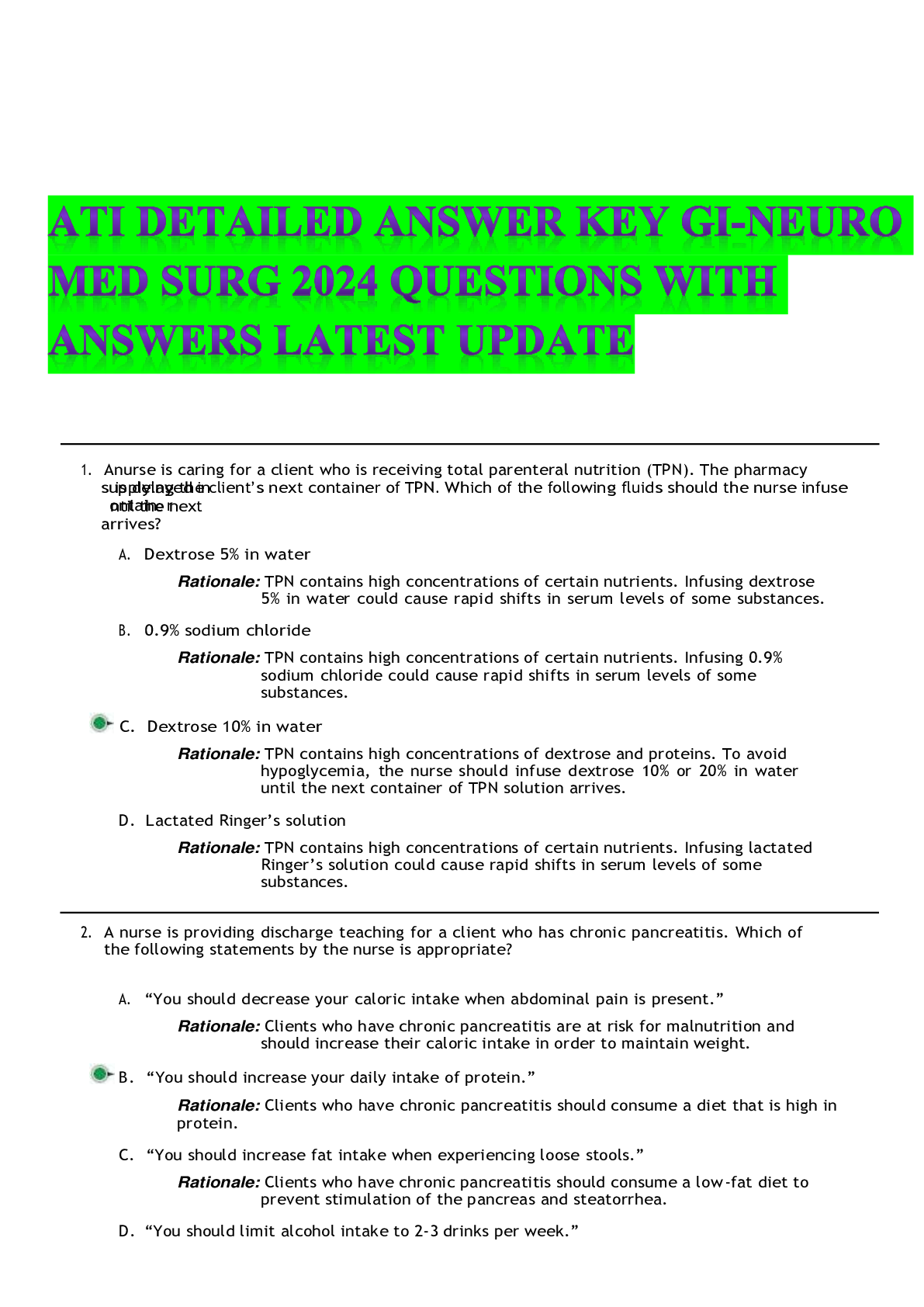
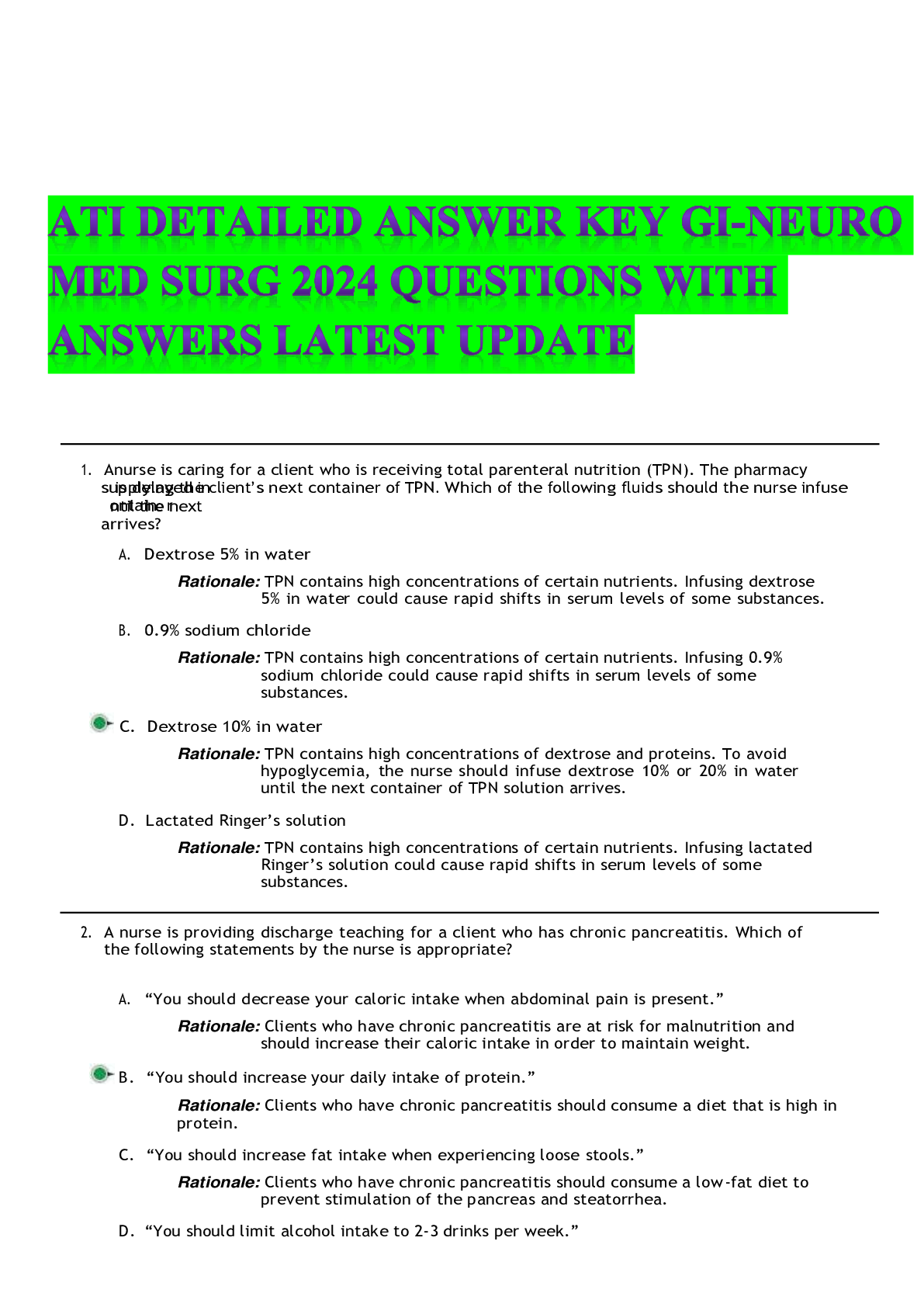
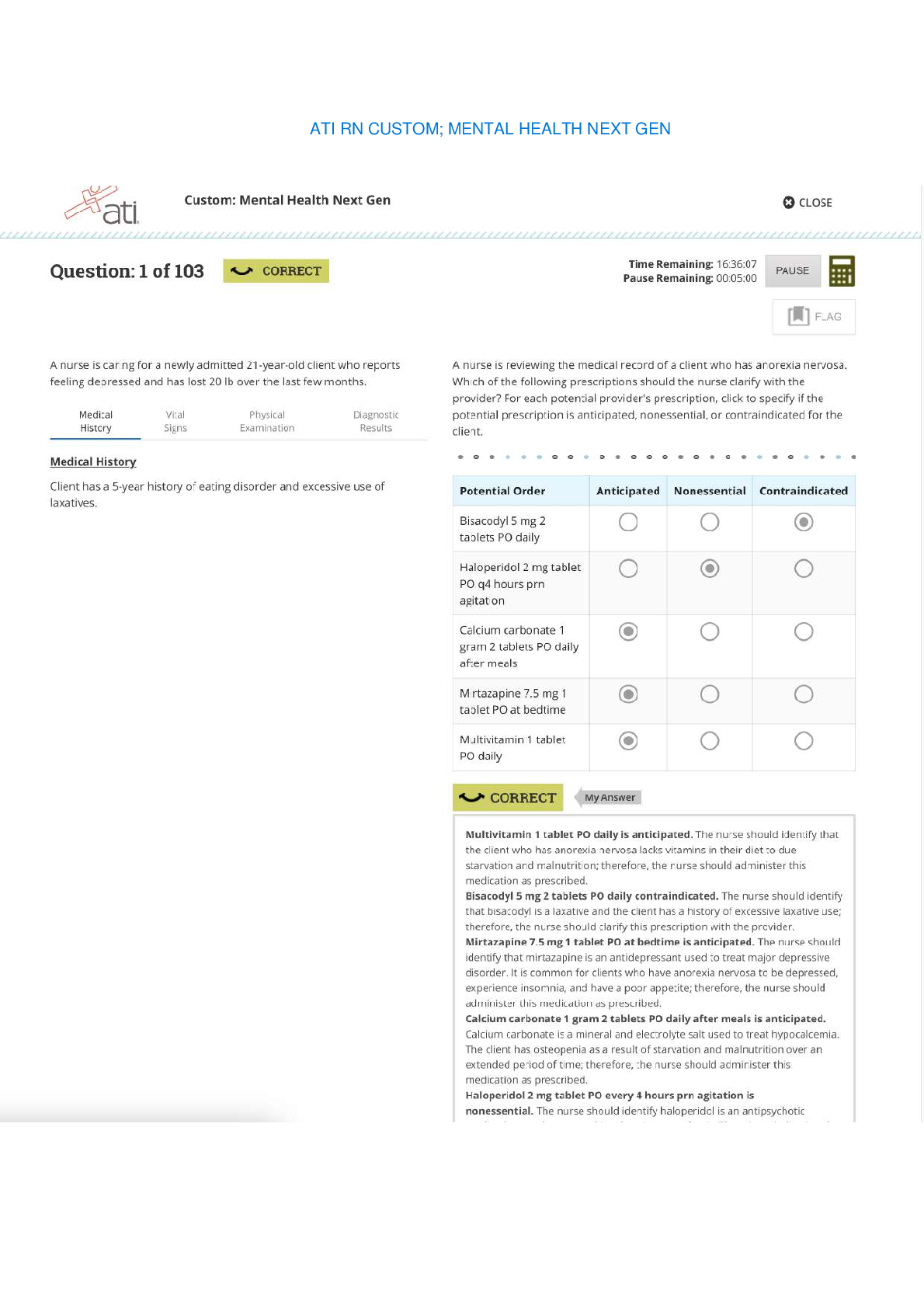
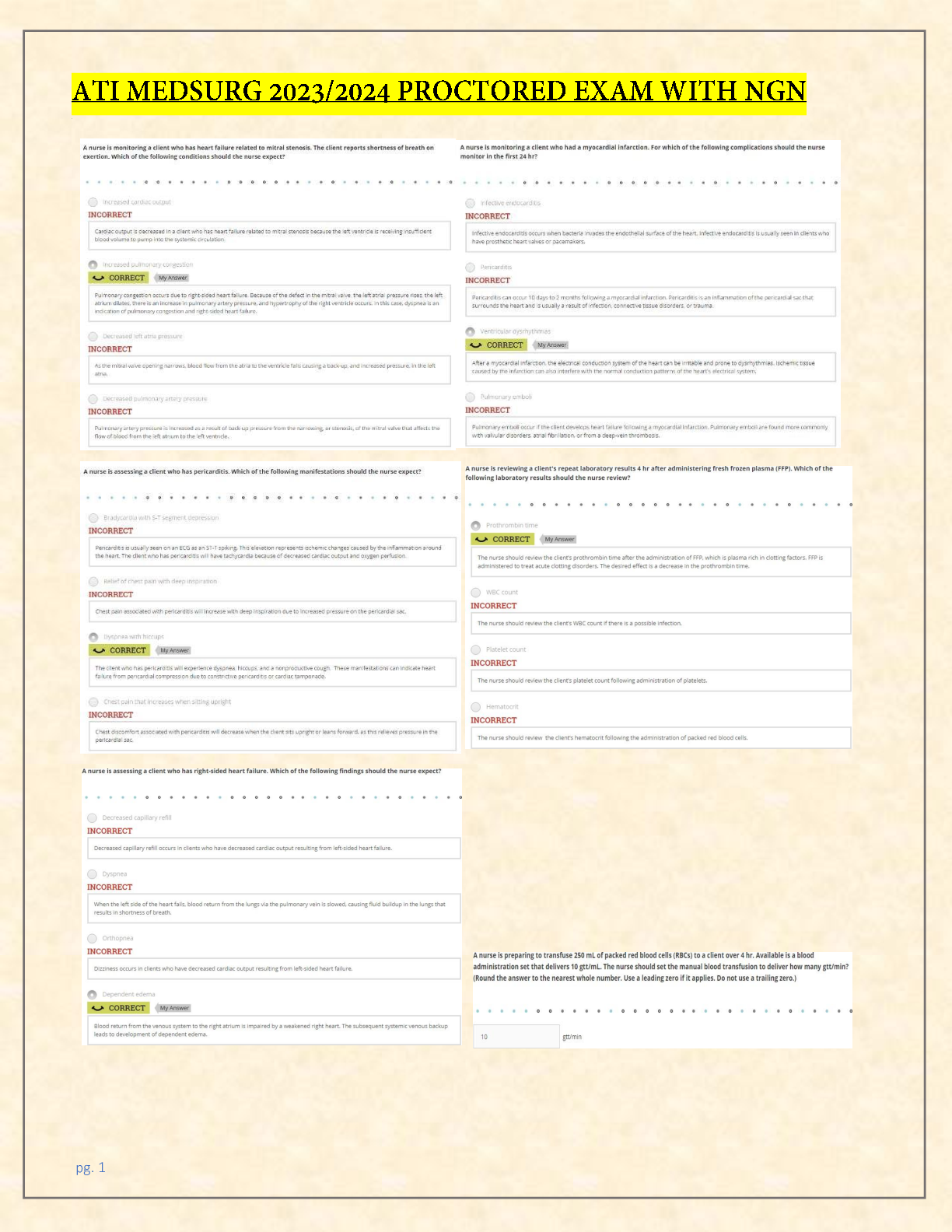
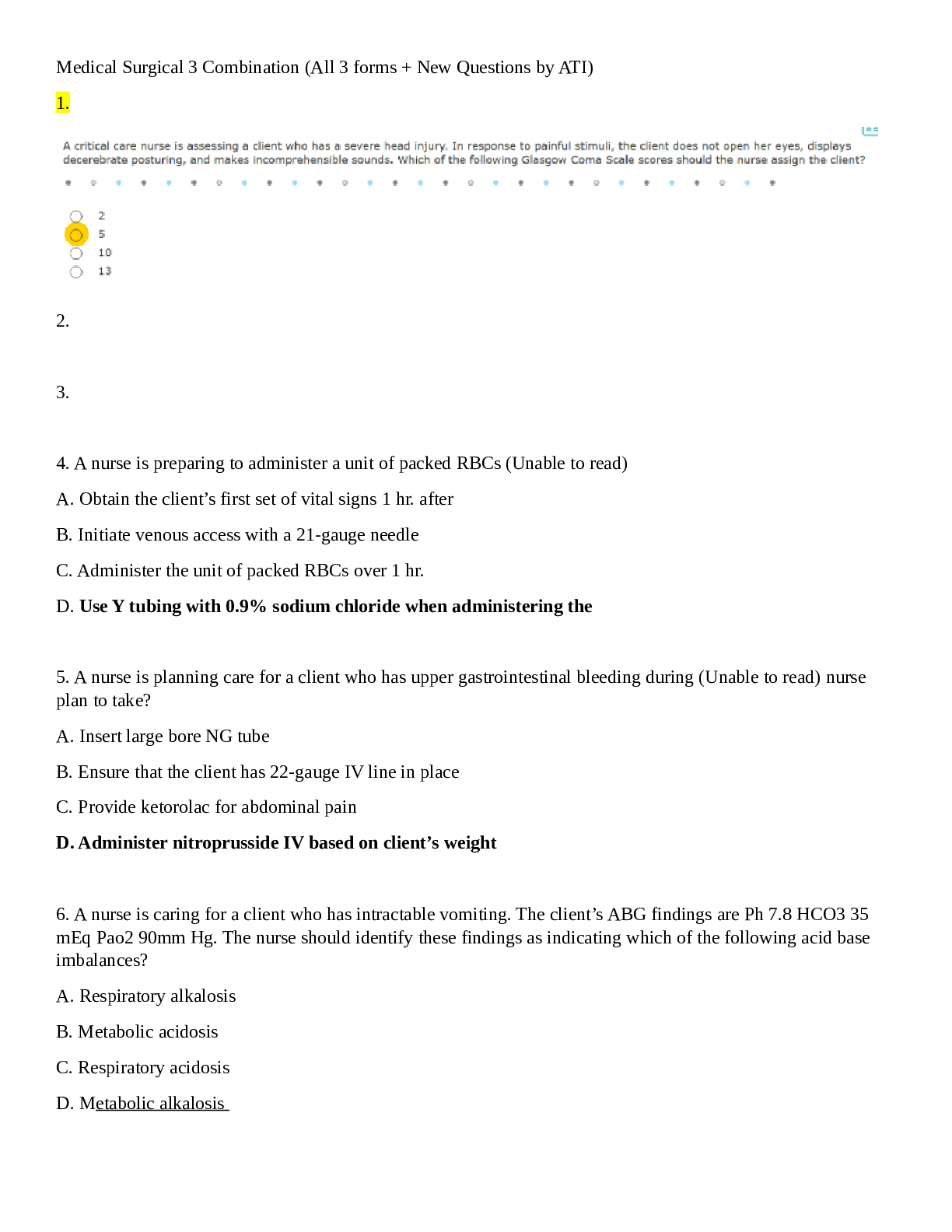
 – Chamberlain College of Nursing.png)


